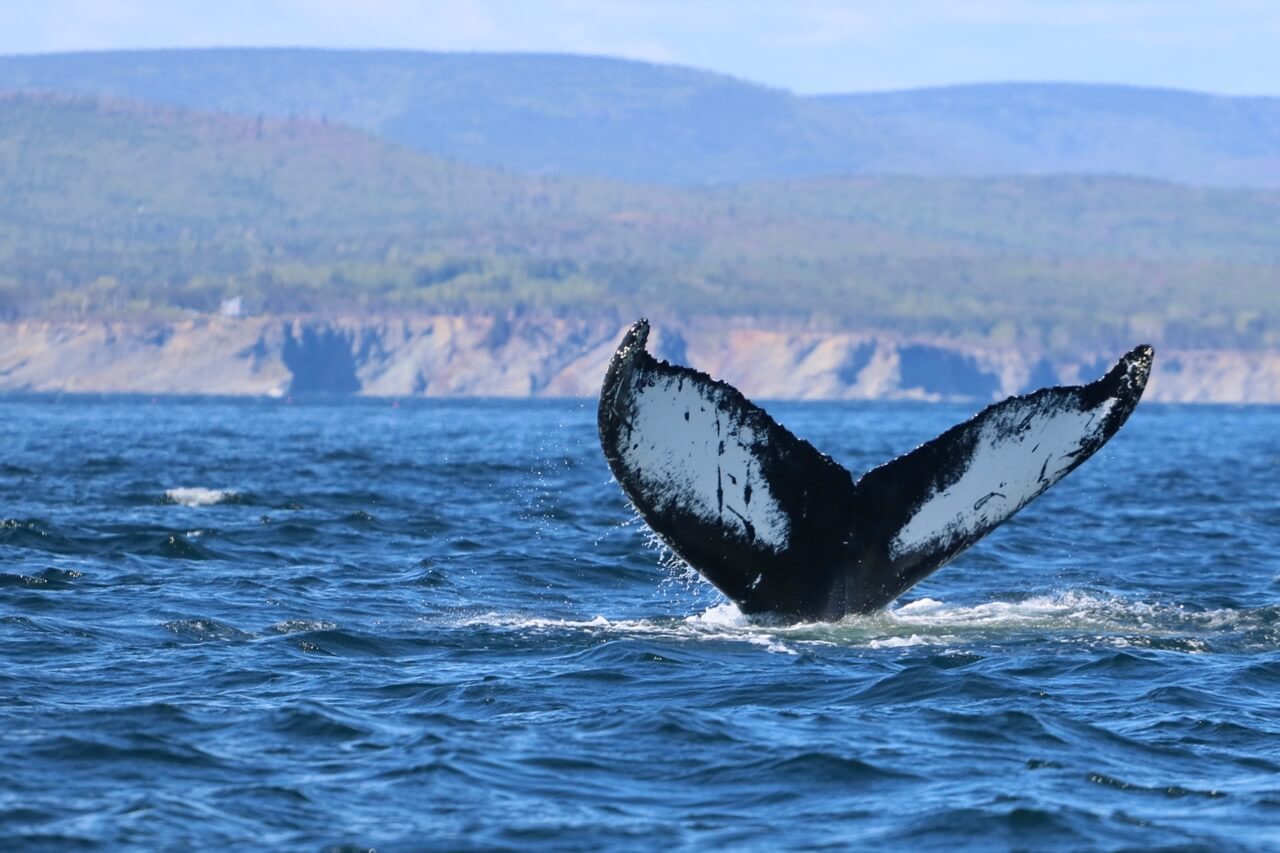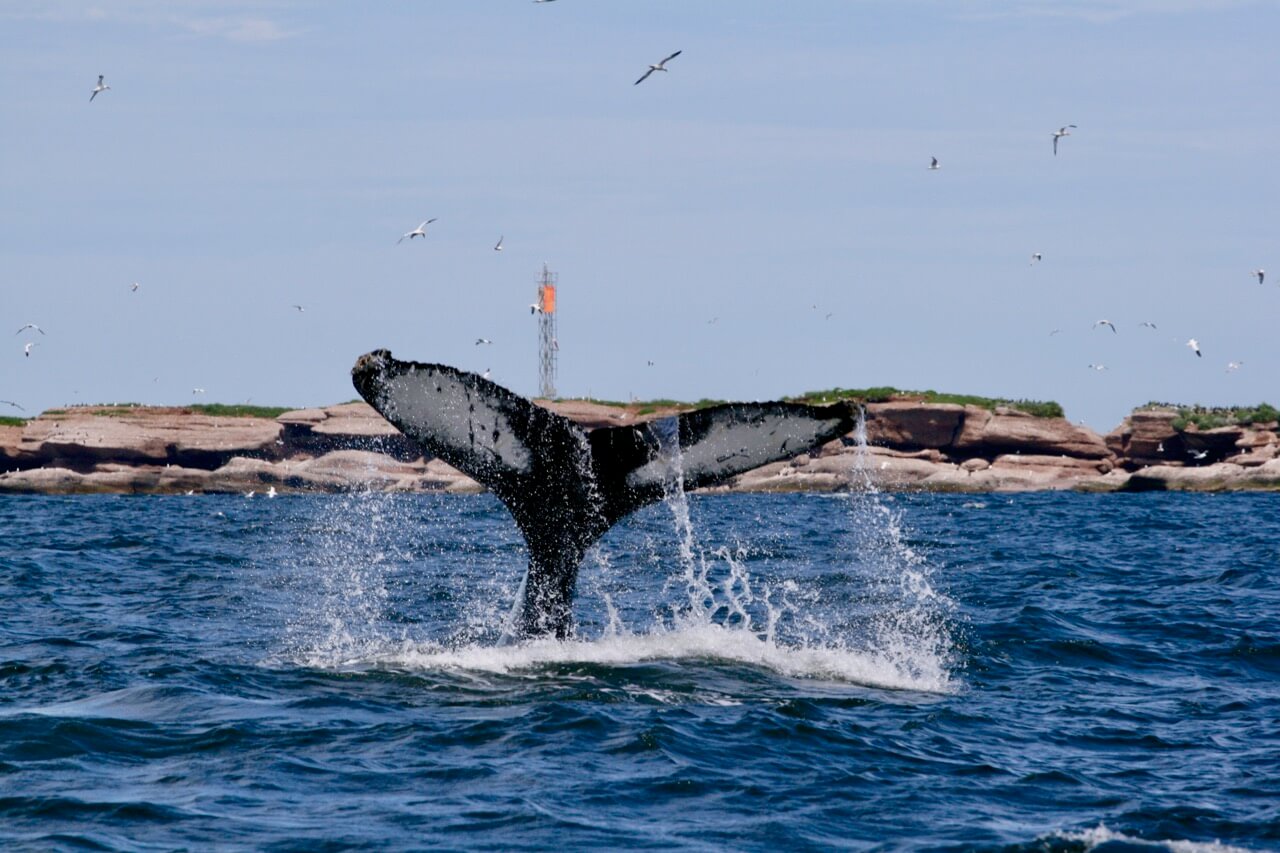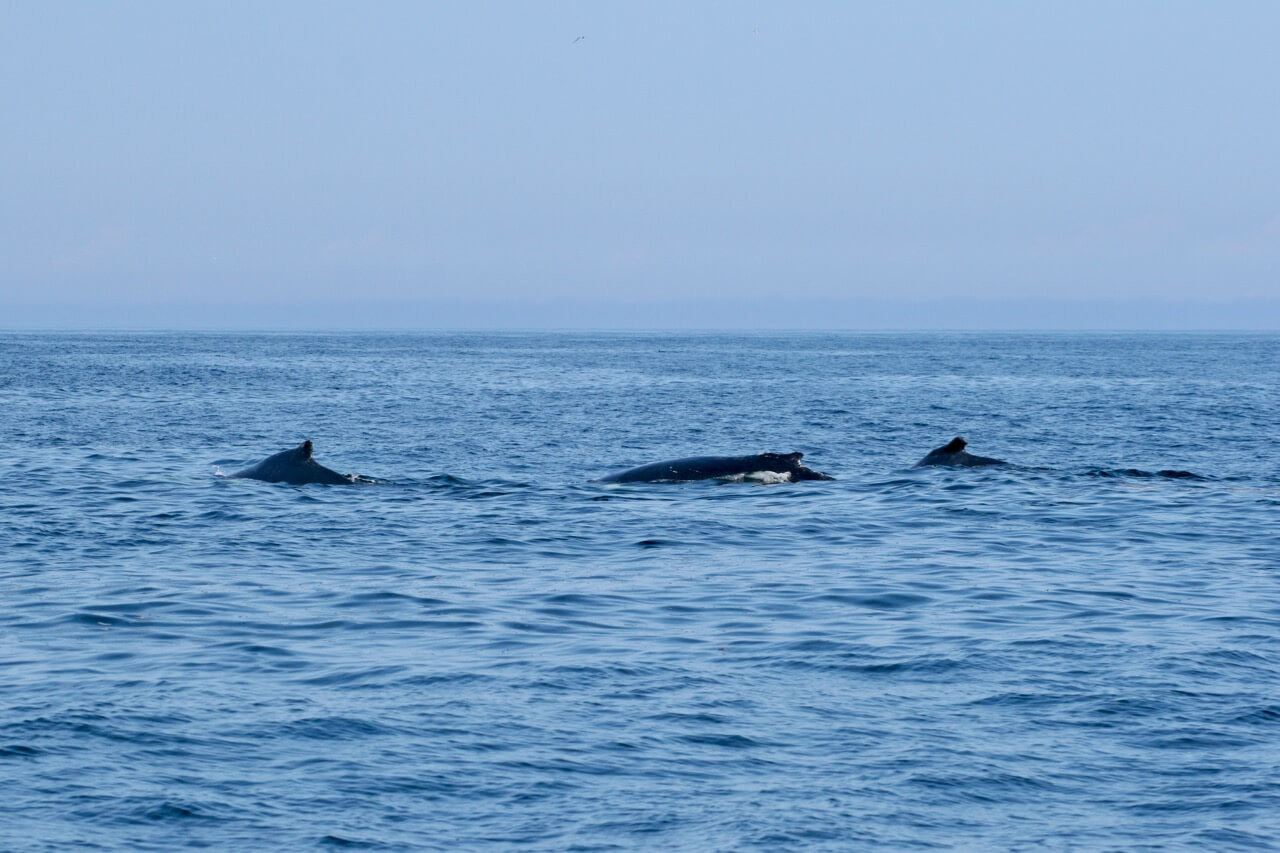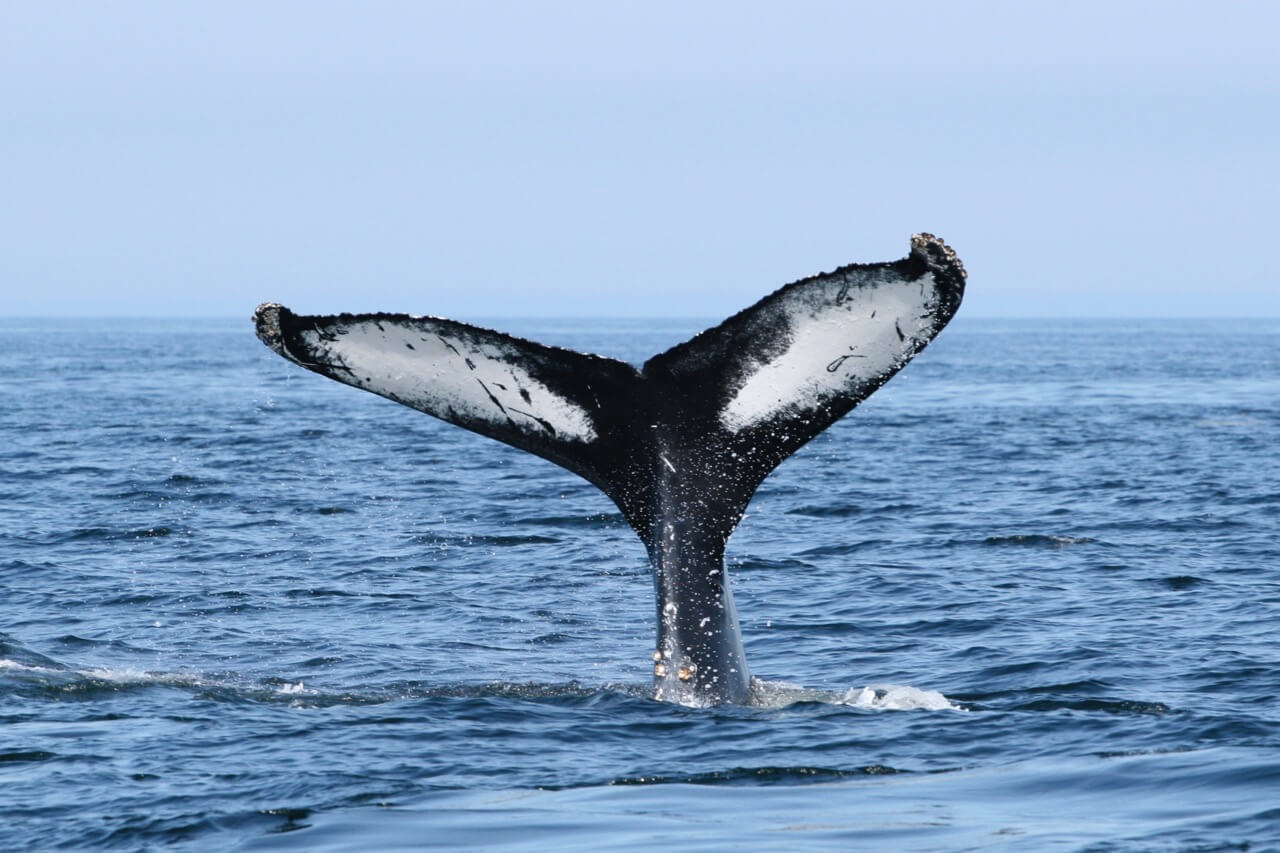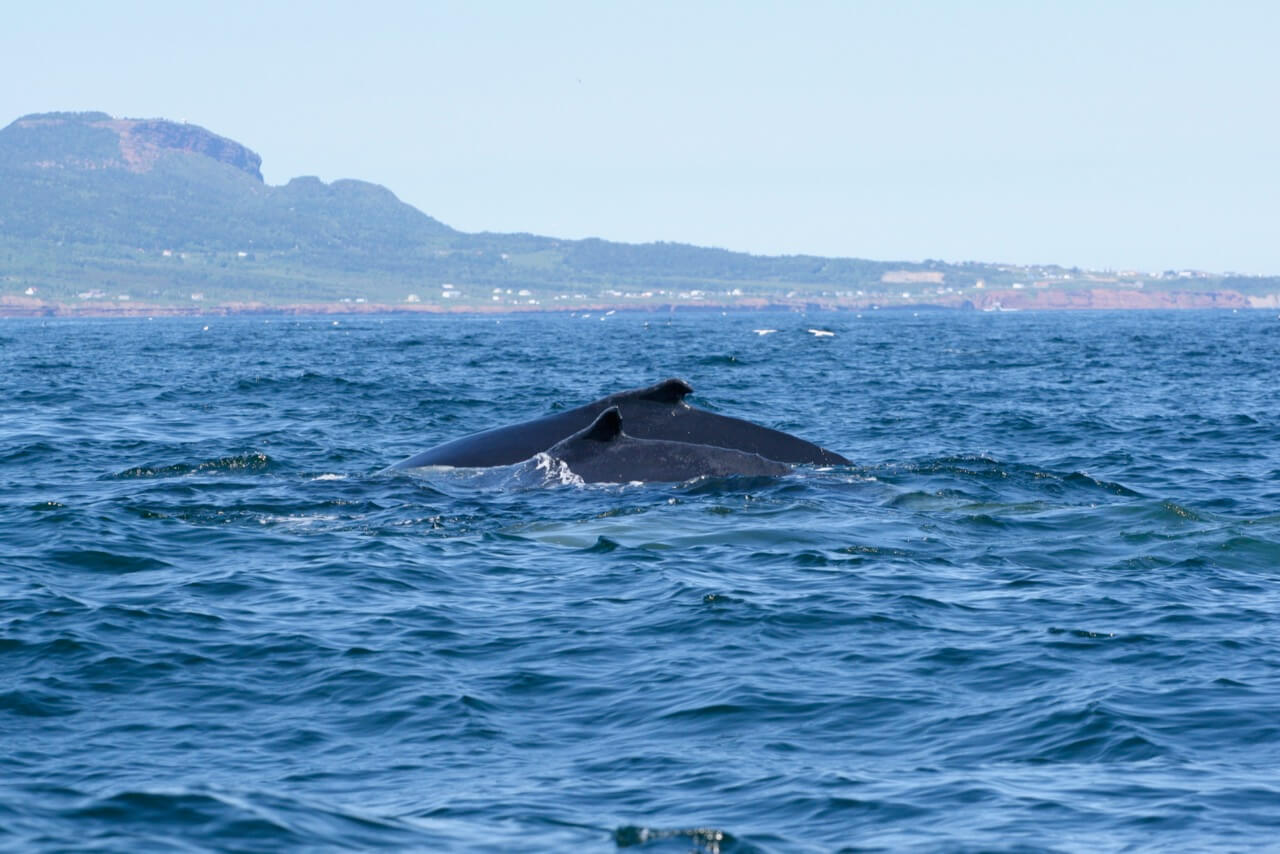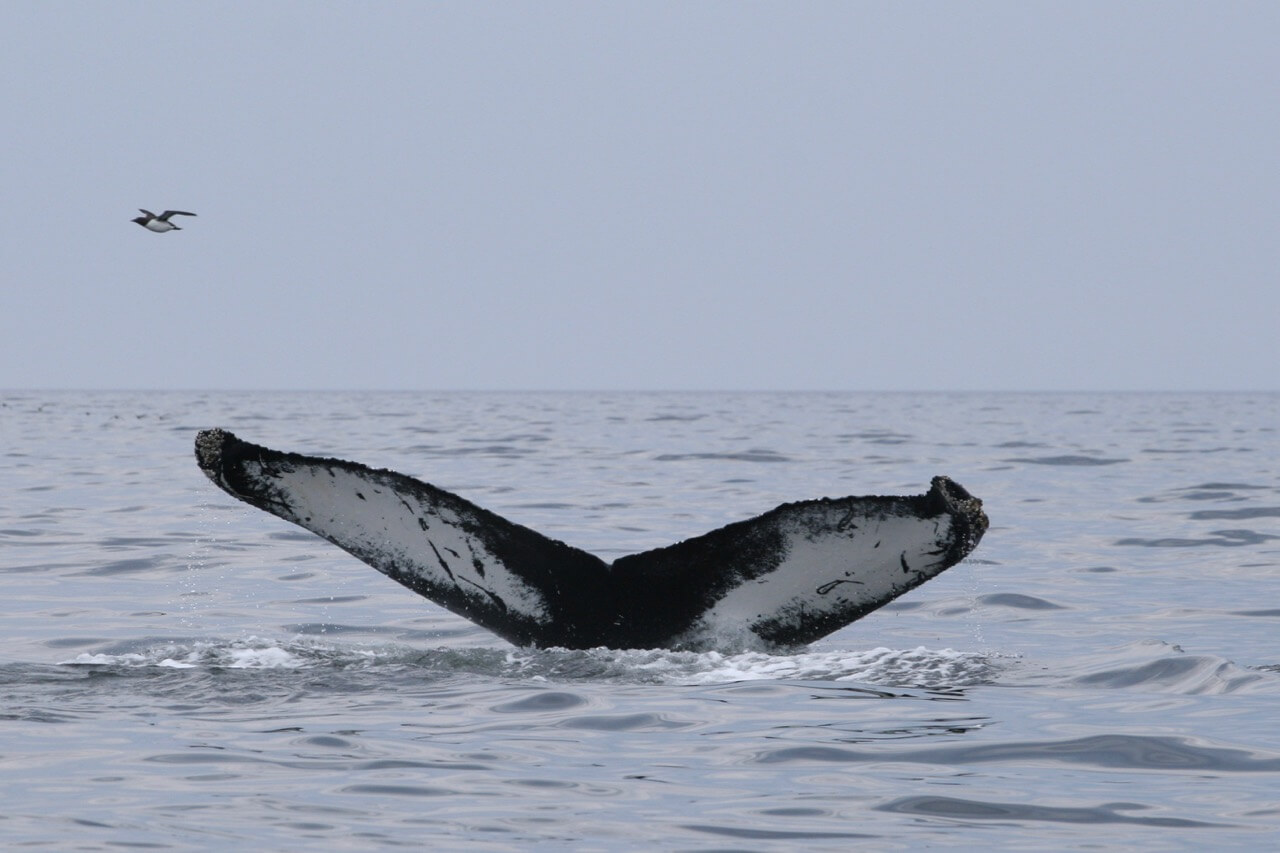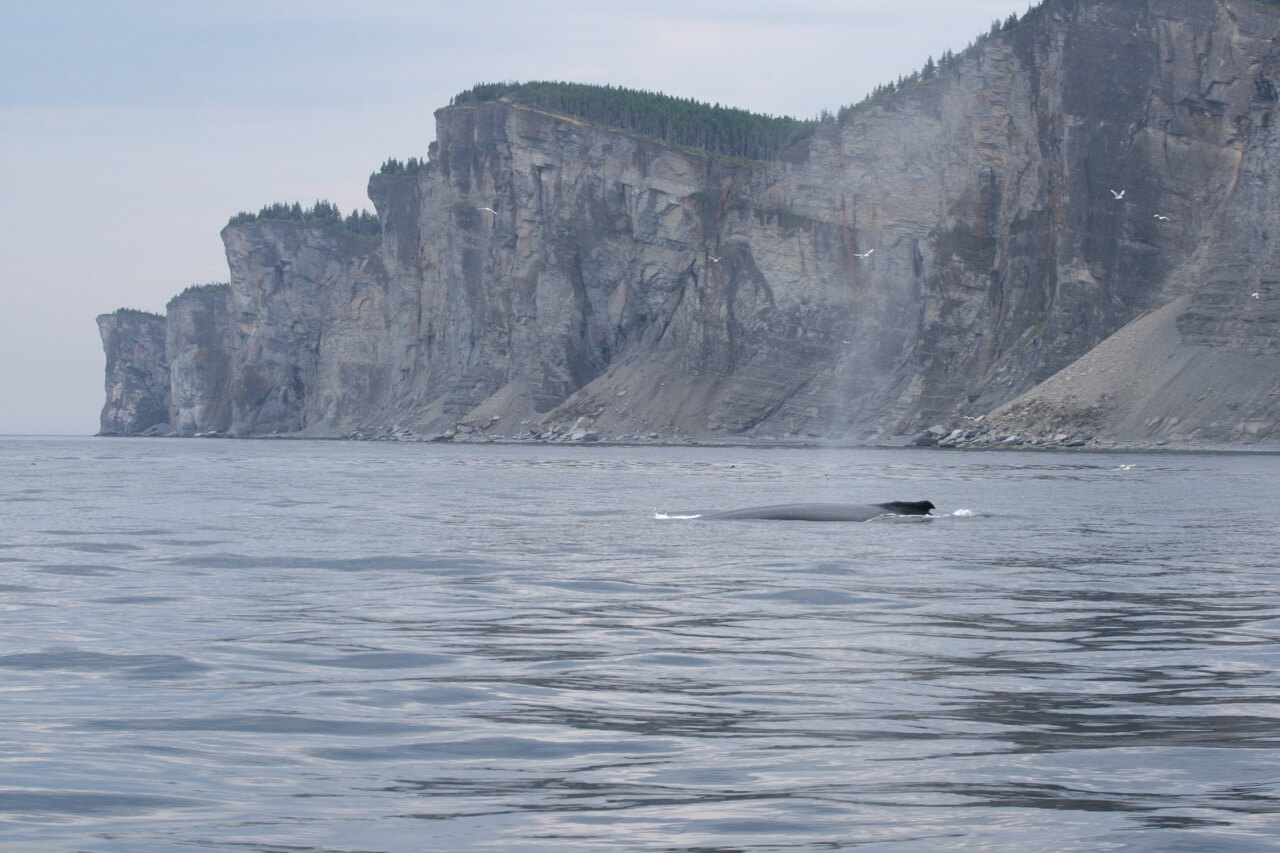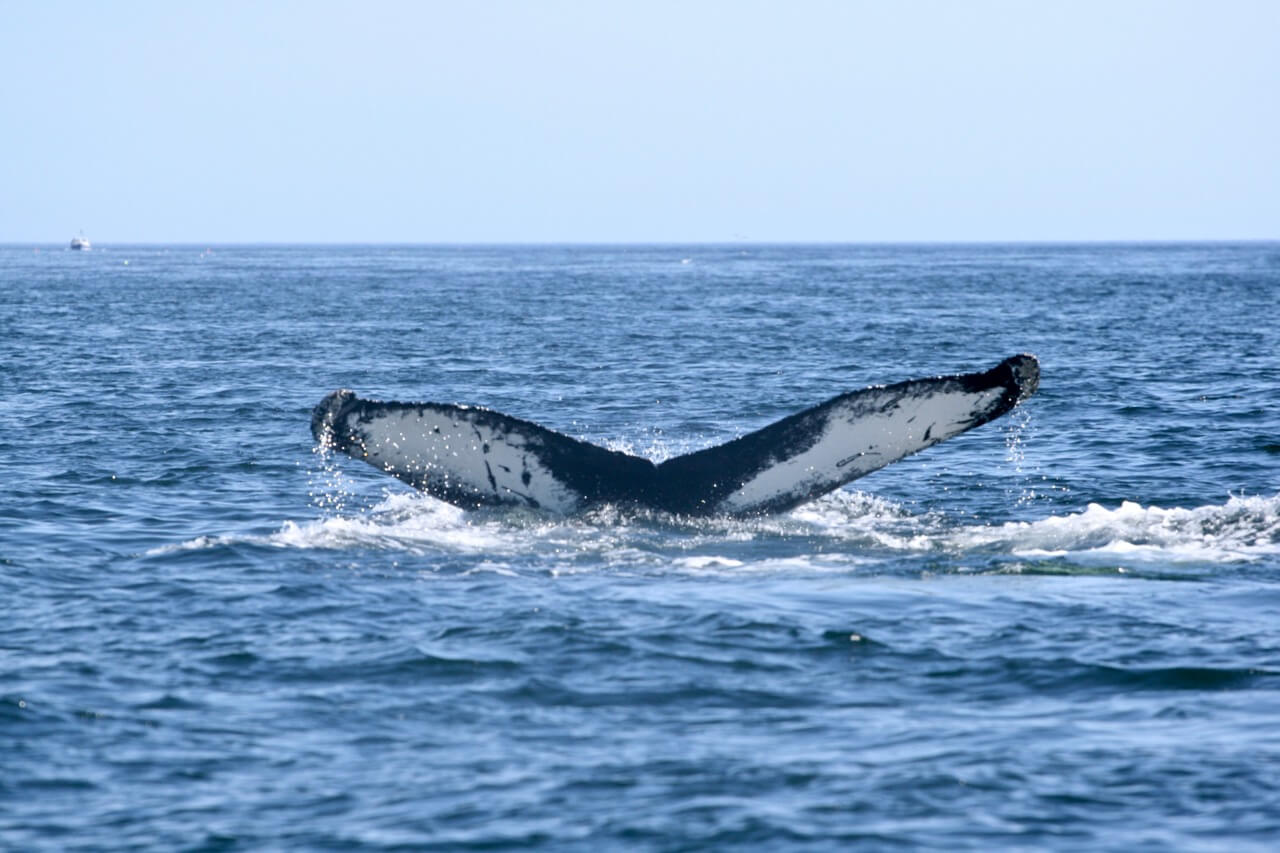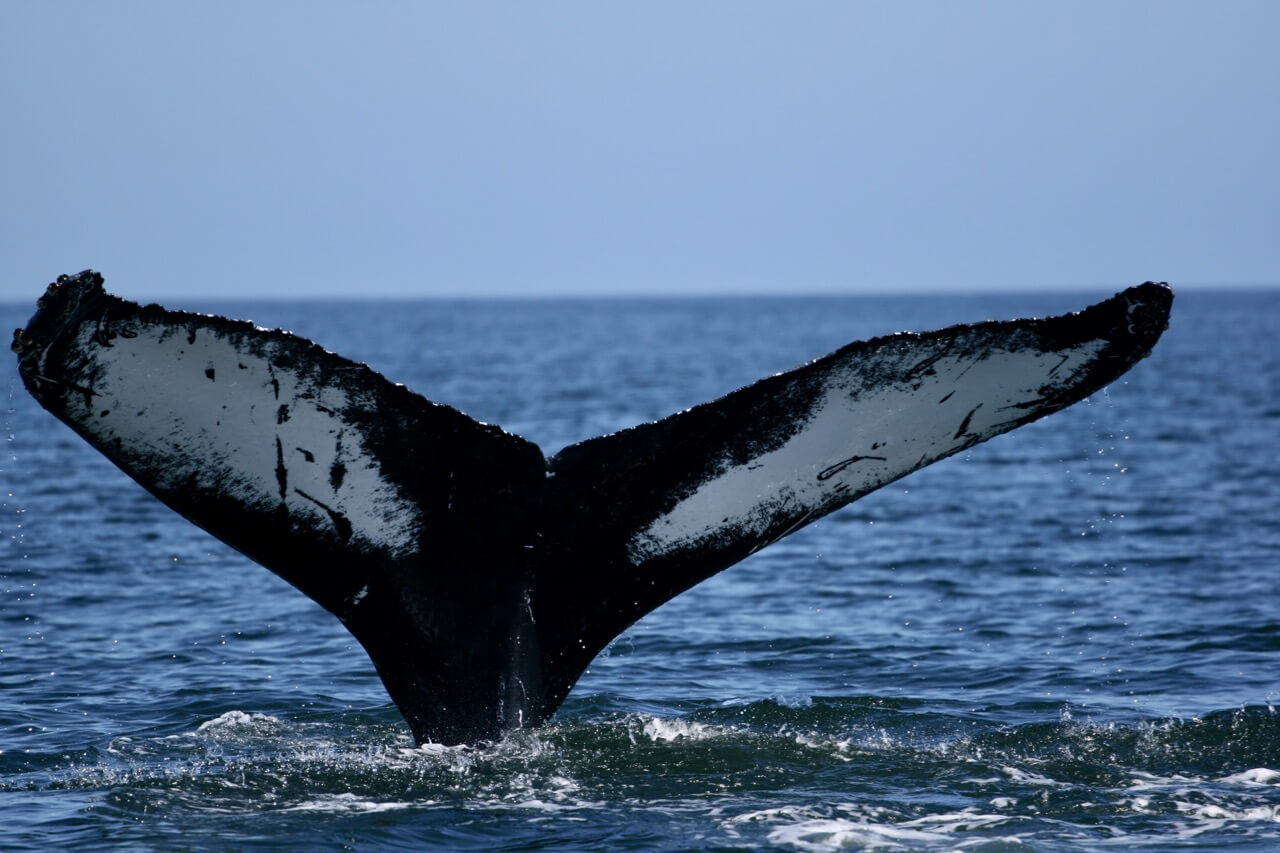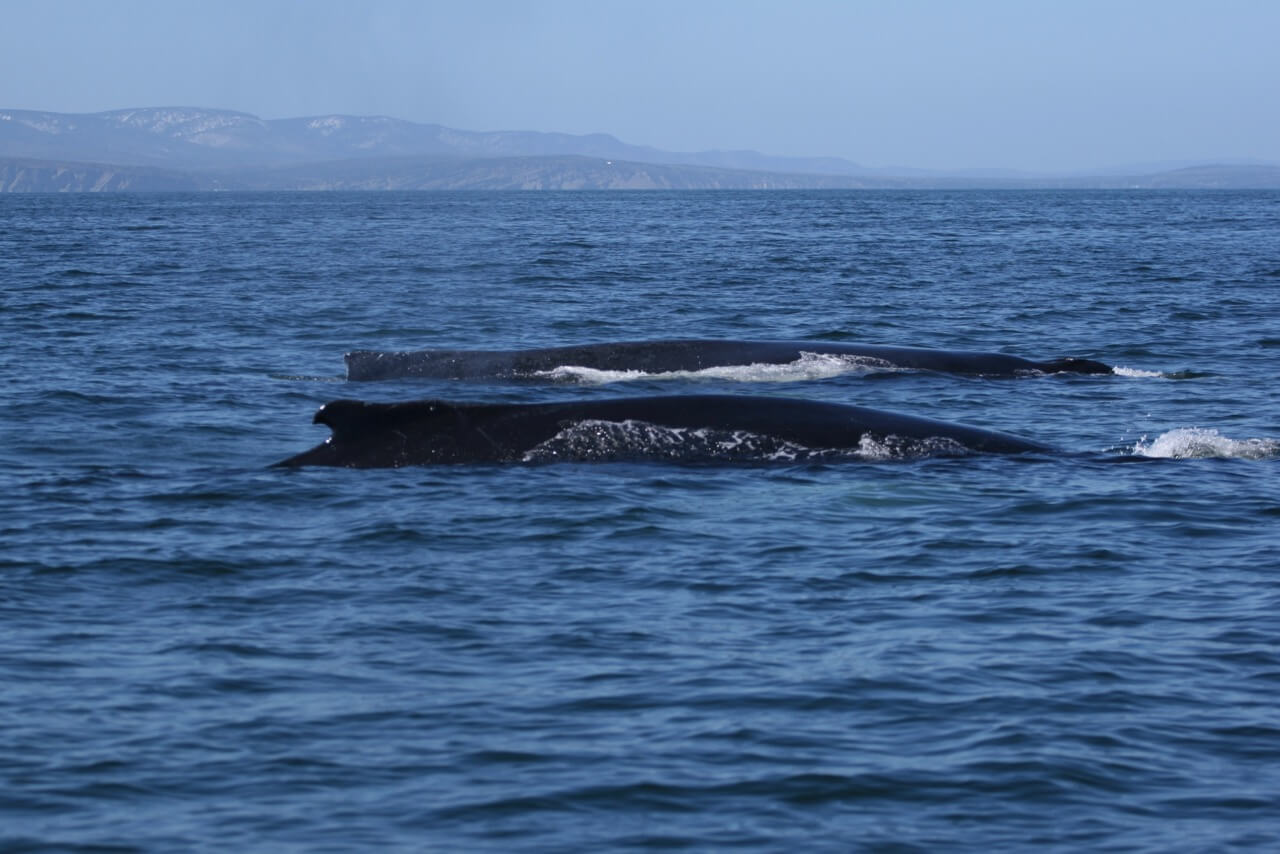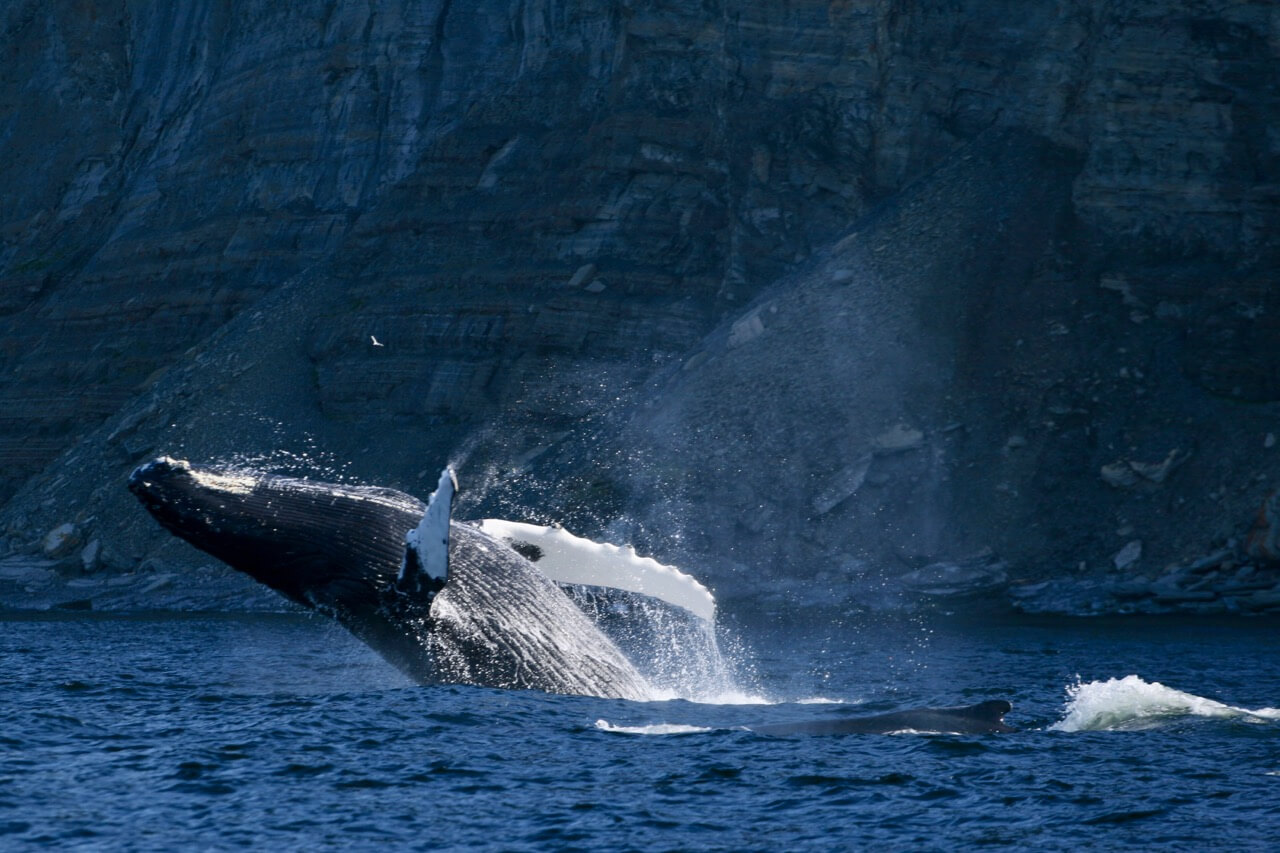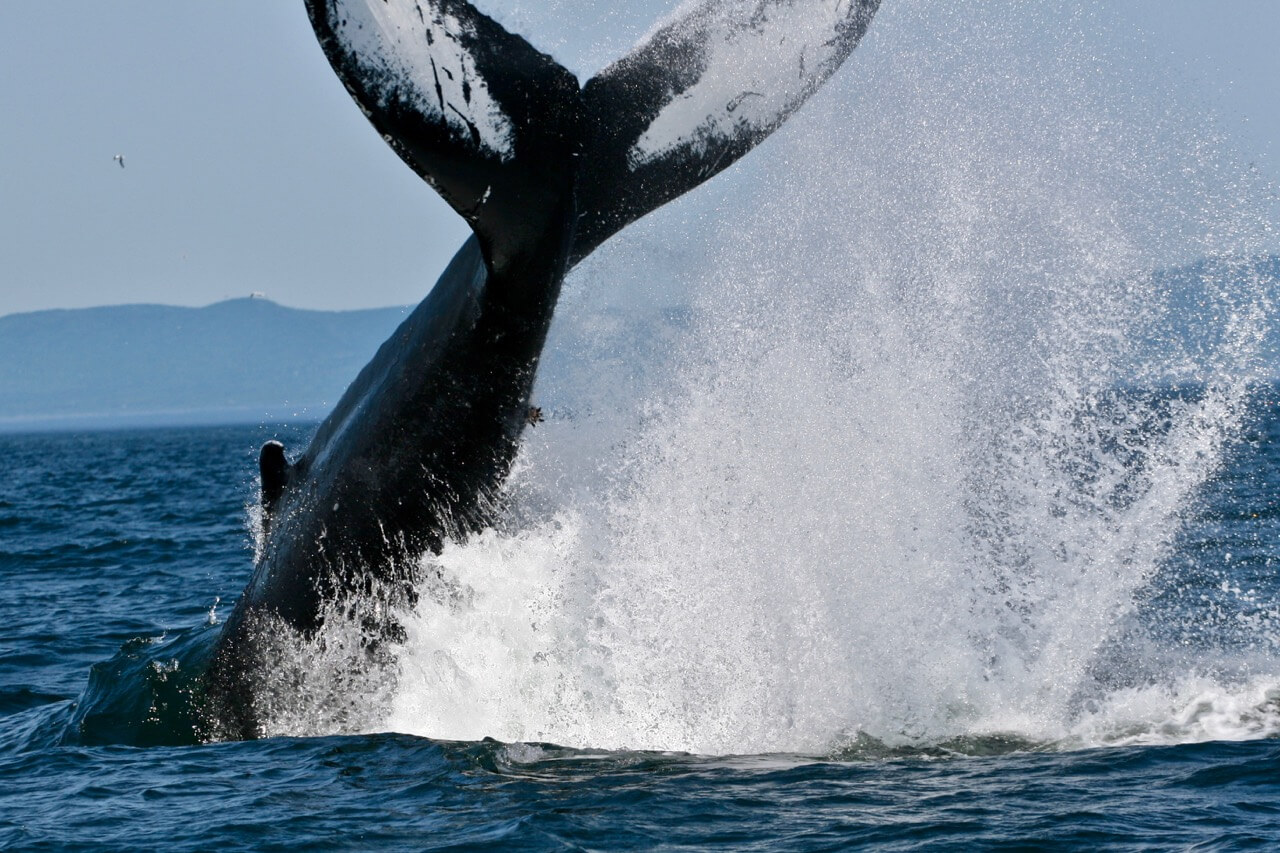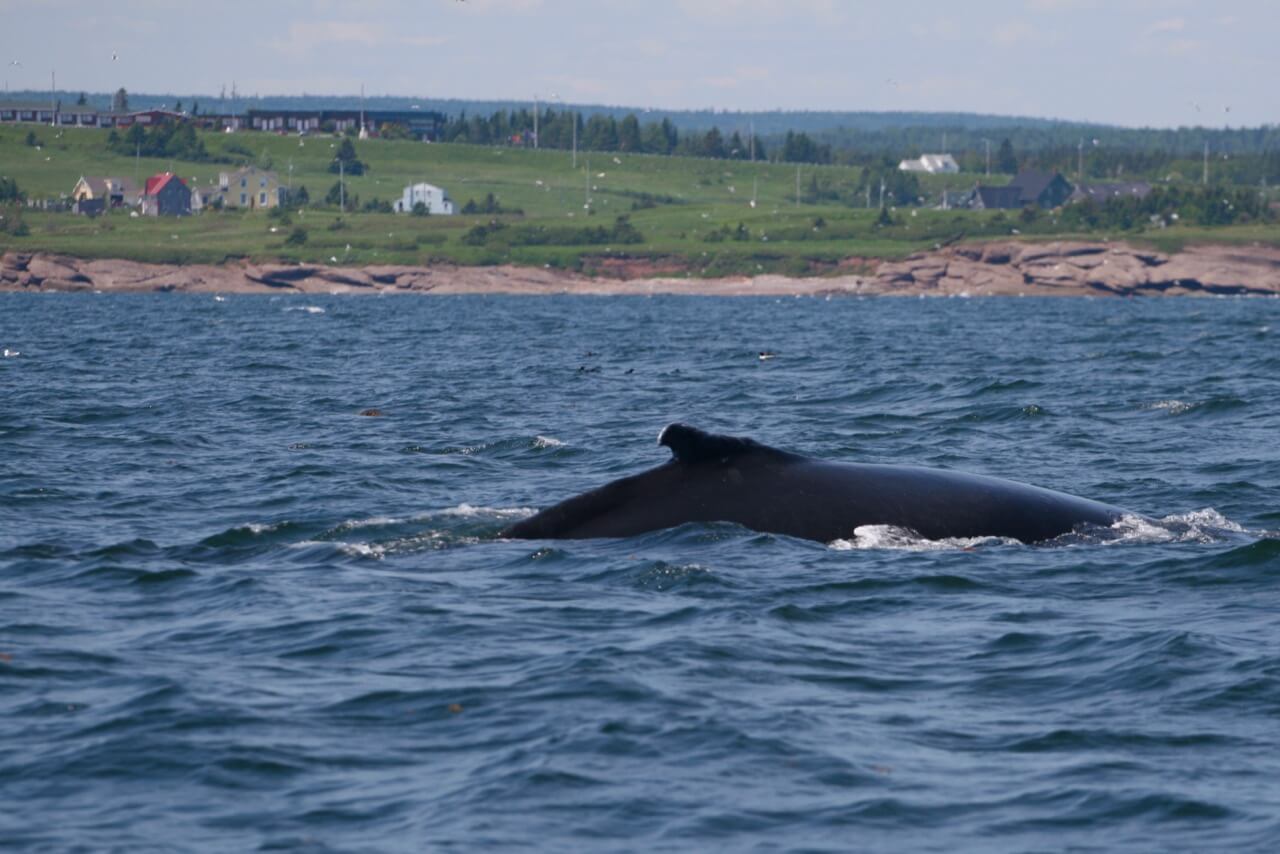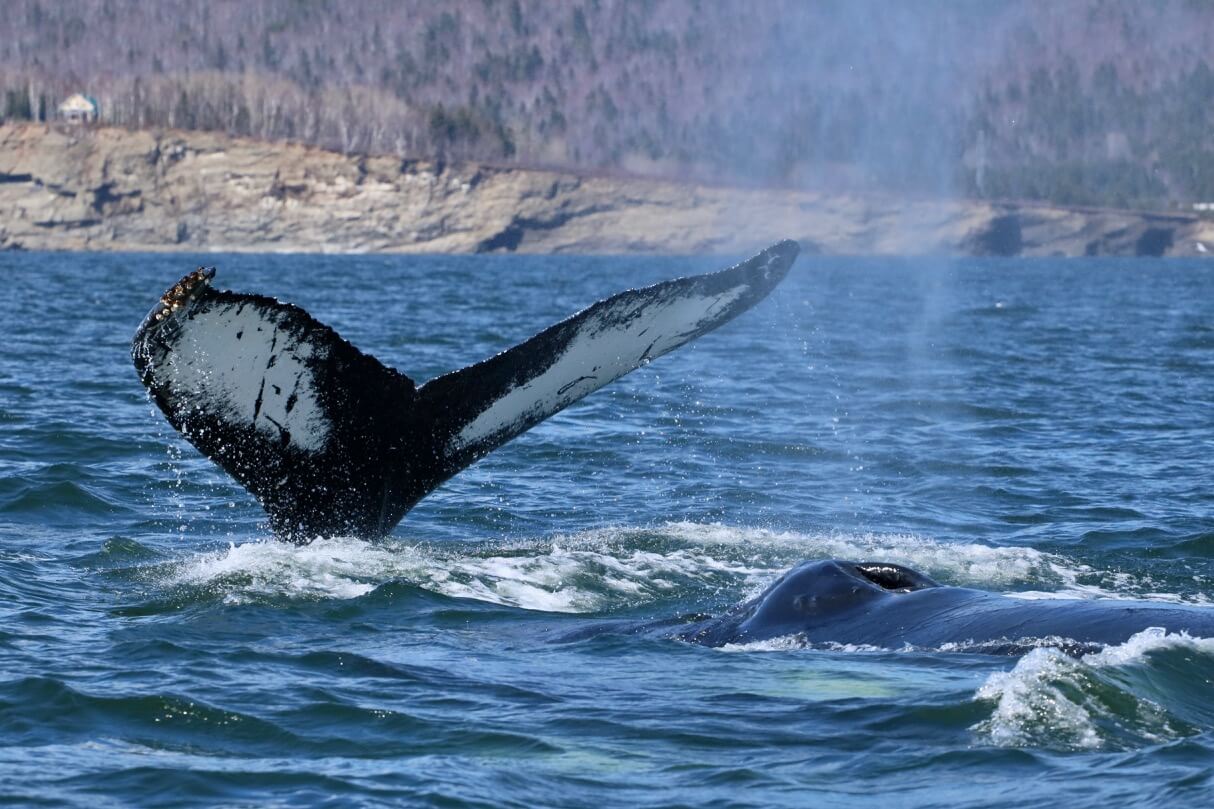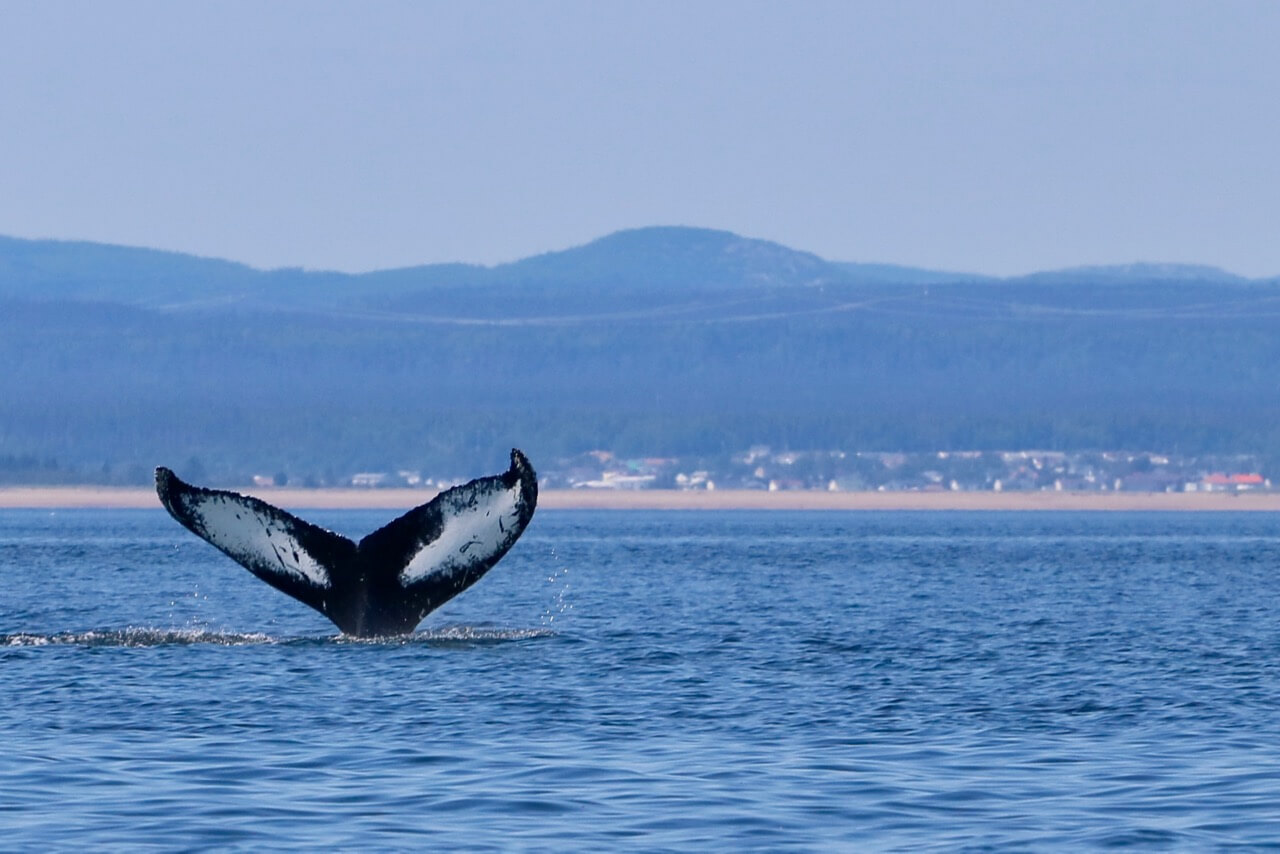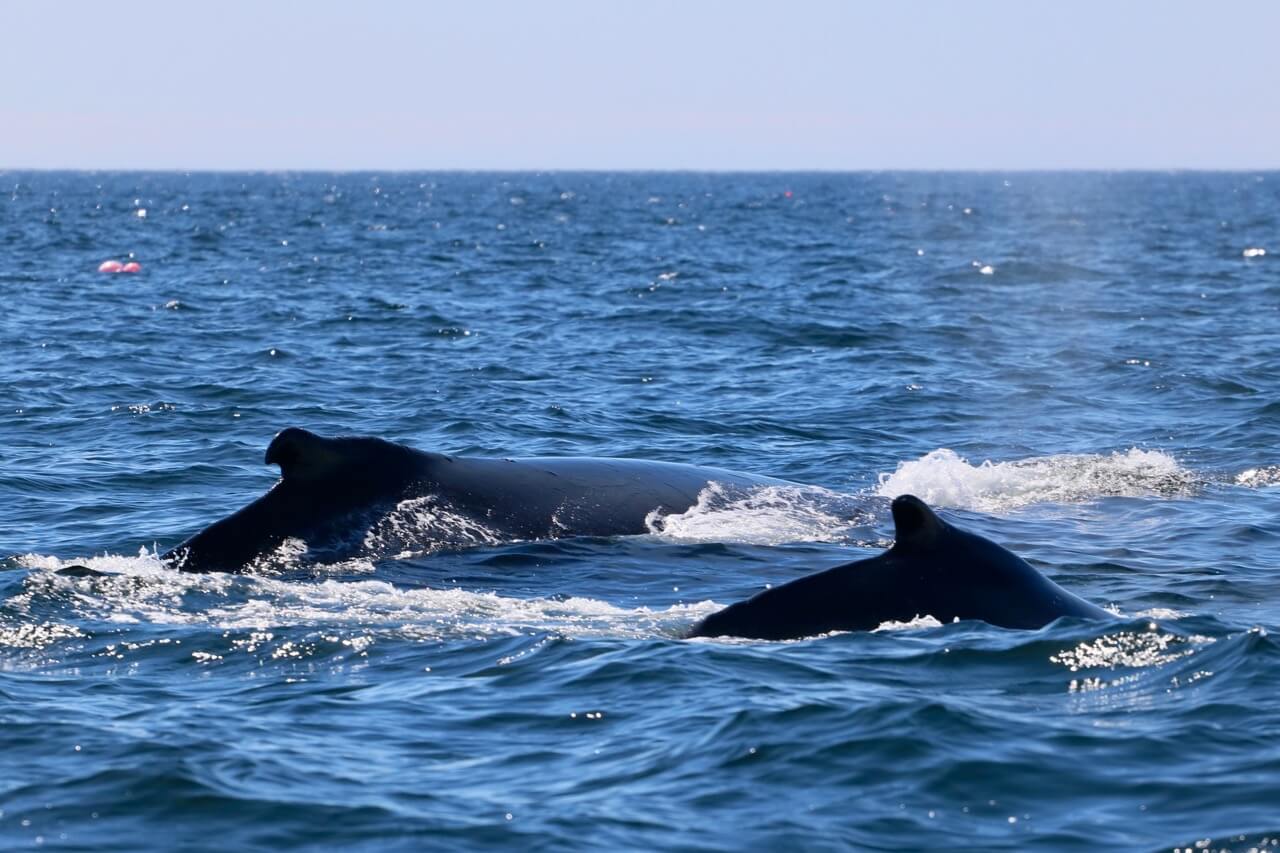Friday, June 8: after being notified of 3 blue whales purportedly present in the Gaspé region, I decide to head there, despite the forecasts for relatively strong winds. With winds at least as strong as what they had been calling for, I was only able to spend a few hours at sea on Saturday, June 9 and Monday, June 11, setting sail from the small port of Anse-à-Brillant.
I failed to locate any blue whales in the core area, but I was able to observe five humpbacks, including my faithful H626, nicknamed Boom Boom River (BBR) in the Gaspé region and Gaspar in the Estuary. It was the 11thyear in a row that I managed to spot her. I’d like to offer a brief flashback of these 11 sightings.
2008
It’s always a thrill to see this female that I first observed on July 5, 2008 in the Percé sector, near Île Plate off Pointe Saint-Pierre. According to data from the Mingan Island Cetacean Study (MICS), she was 3 years old at that time, as she was born in 2005. At the time I was with my boat in the presence of another MICS vessel operated by Valentine Ribadeau-Dumas, who had made the crossing between Mingan and Gaspé with a few crew members. This juvenile whale put on an impressive show of lobtailing and pectoral fin slapping.
2009
The following year, on July 23, 2009, together with my faithful captain Pierre, we find her off Cap Gaspé in the company of the female Manta and her first-year calf. We also witness a gathering of tall sailboats in Gaspé Bay.
2010
June 10 2010: I spot her accompanied by H759 off Cap-d’Espoir, west of Percé.
2011
July 6, 2011: she is spotted in a group of 5 humpbacks off Cap Gaspé. She is hunting prey near the northern cliffs of Forillon.
2012
Morning of June 8, 2012: accompanied by my birder friend Jacques, we set sail out of the small fishing port in Saint-Georges-de-Malbaie. It’s 9 a.m. when we sneak up on H626, with just enough time to make a photo ID. We would not see her again the rest of the day. We observed several fin whales that day and three other humpbacks.
2013
May 3, 2013: the weather is cold, but the skies are clear. I am accompanied by MICS researcher Christian Ramp. We head to the waters off Cap Gaspé, where we encounter H626 together with Irisept and Tic-Tac-Toe. The three females are swimming side by side at the surface for an extended period and it’s a long time before we see them lift their tails when they dive, which clinches the identification. Christian takes advantage of the opportunity to take a biopsy of H626.
2014
July 17 and 18, 2014: I find her again with a group of several other humpbacks, including her companion H692, a.k.a. Paloma. She is extremely active these days, breaching several times off the cliffs just like Calypso’s calf, who is also putting on a display in Gaspé Bay at the same time.
2015
July 1 and 4, 2015: I found H626 exactly where I had seen her the first time, between Pointe Saint-Pierre and Île Plate. She is essentially engaging in the same antics as in 2008.
2016
July 18, 19 and 20: I am accompanied by Stacey Cassivi, a guide/interpreter who has not yet kicked off her season on board the Narval III. For 3 consecutive days, we are able to observe H626 together with Pseudo and her first-year calf, who are feeding in Gaspé Bay.
2017
Last year, during a solo foray out of Rimouski to the Pointe-à-Michel sector on the North Shore, I had the chance to observe her opposite the village of Betsiamites. This was the only time I ever observed her in the Lower Estuary.
2018
And finally, last weekend, Saturday, June 9, once again with my captain Pierre, we are delighted to see the very sociable H626 in Gaspé Bay accompanying by an as-yet unidentified humpback.


